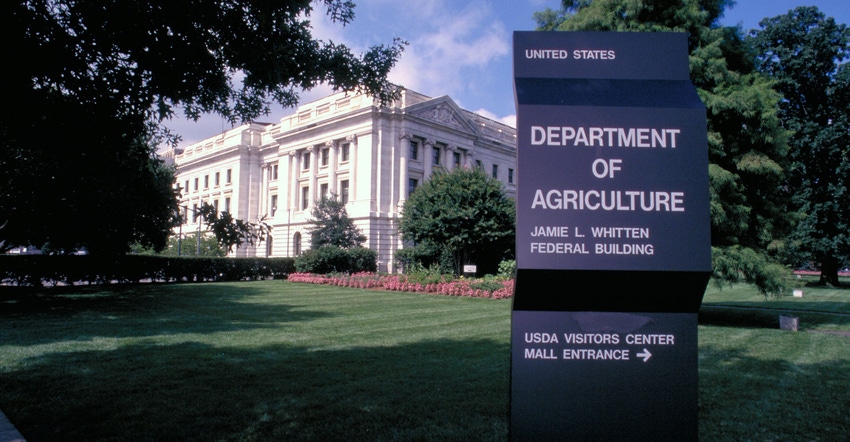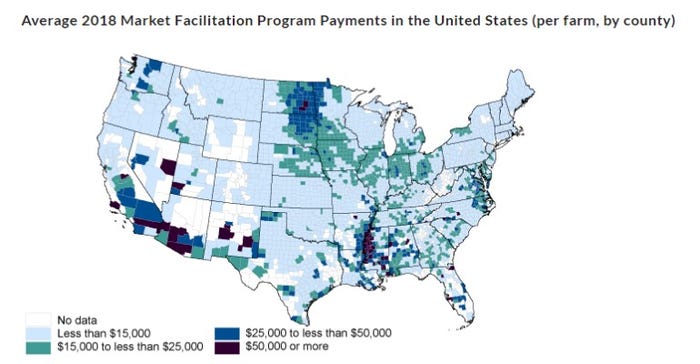
In the wake of the China trade war, USDA's Farm Service Agency administered the Market Facilitation Program, which distributed payments to farms for losses caused by international trade disruptions in 2018 and 2019. FSA distributed $23 billion in such payments for those years. A new Government Accountability Office report reviewed the program and found that FSA could have done better at ensuring these payments were accurate as well as more equitable for different segments of the ag industry.
To offset losses in agricultural export sales caused by international trade disruptions and increased tariffs on certain U.S. exported products, FSA distributed payments to farms through the MFP, a USDA supplemental assistance program.
GAO was asked to review aspects of USDA's implementation and oversight of the MFP. The report examines USDA's distribution of MFP payments to historically underserved and high-income farmers for both 2018 and 2019 and the extent to which USDA verified farms' compliance with MFP eligibility requirements for both 2018 and 2019.
GAO found FSA’s review to verify that 2018 MFP payments were based on accurate information was limited in its usefulness for several reasons. For example, FSA did not ensure the results of its review were reliable because the agency did not collect or analyze information in a statistically valid manner. FSA reviewed a sample of larger payments at a higher rate than smaller payments but did not focus on other characteristics posing risk to the accuracy of payments. And FSA did not communicate the results of its review, including a summary of findings and the types of errors found, or identify corrective actions.
GAO said example, during its spot check on 2018 program payments, FSA should have paid special attention to risk factors including first-time recipients or farms that received program payments of over $250,000.

GAO's analysis of FSA data found that historically underserved farmers—such as those belonging to socially disadvantaged groups that have been subject to racial, ethnic, or gender prejudice—received $818.9 million collectively (3.6%) in MFP payments.
FSA also paid $163.4 million (0.7%) to 883 high-income farms and 1,164 farmers with adjusted gross incomes (AGI) over $900,000 per year. To be eligible for MFP payments, FSA required applicants to have average AGIs of $900,000 or less per year—unless they certified that at least 75% of their income was derived from farming, ranching, or forestry, in which case no income cap applied.
“President Trump’s trade wars affected every corner of our agricultural sector – and unfortunately USDA’s response fell short. We have to make sure there is fairness and accountability so all farmers can get the support they need from USDA,” says Senate Agriculture Committee Chairwoman Debbie Stabenow, D-Mich.
Stabenow has consistently raised strong concerns around the equity of the Trump Administration’s payments to farmers and requested the GAO investigation in February 2020. A September 2020 GAO report confirmed Stabenow’s concerns that the Trump administration payments for trade damages favored certain farmers.
A December 2021 report found the Trump administration significantly overestimated the actual trade damages suffered by producers of eligible commodities and picked winners and losers.
About the Author(s)
You May Also Like






